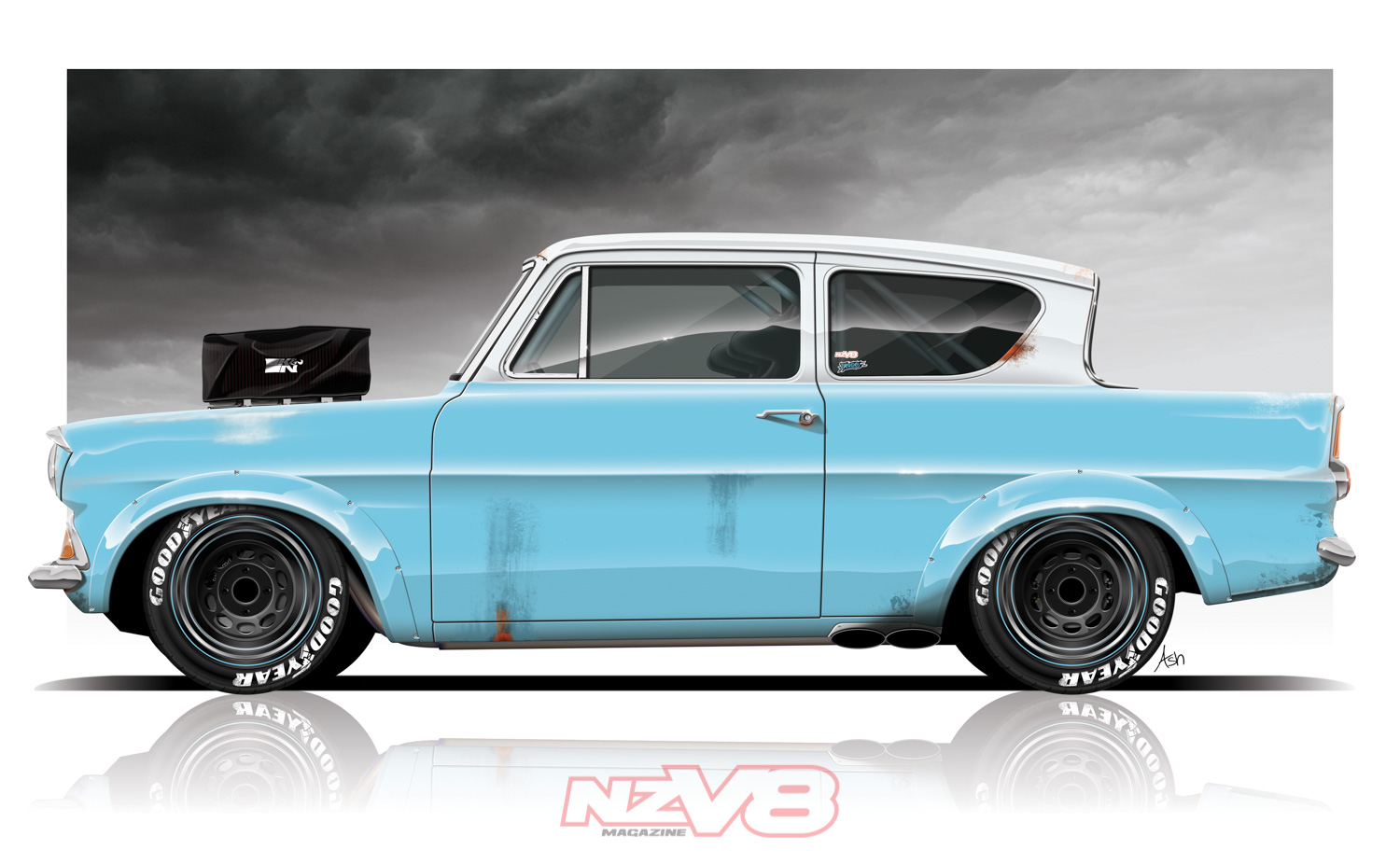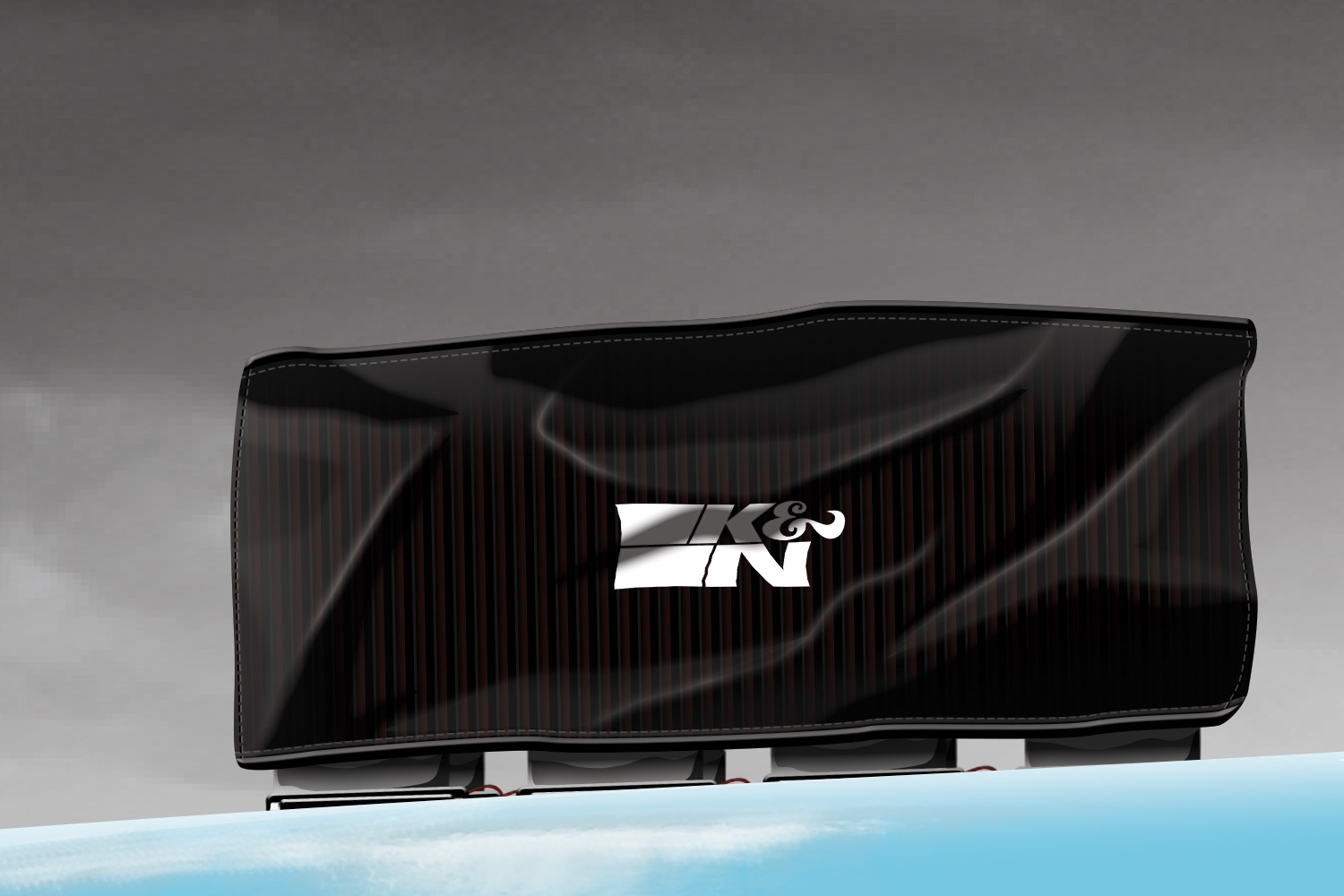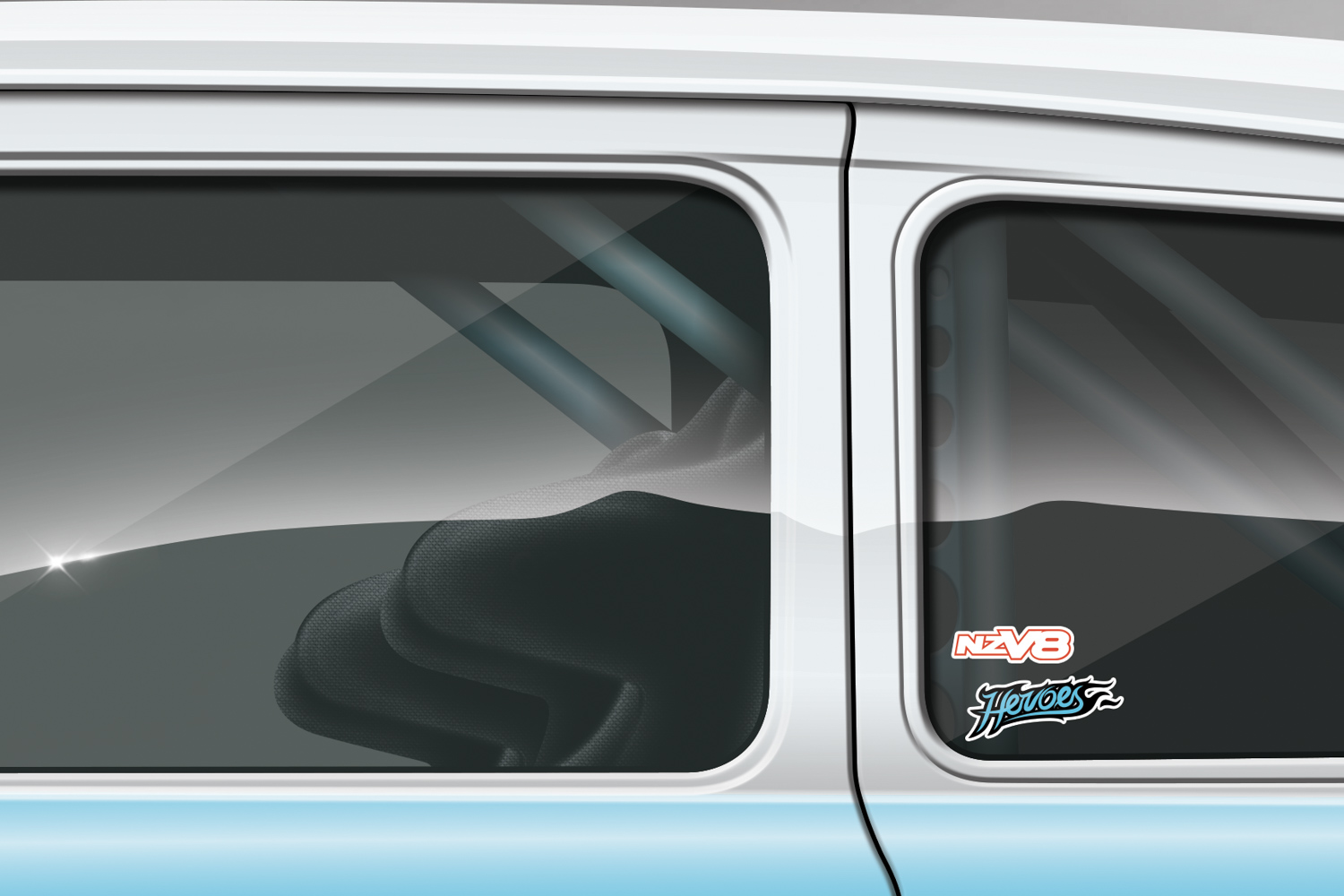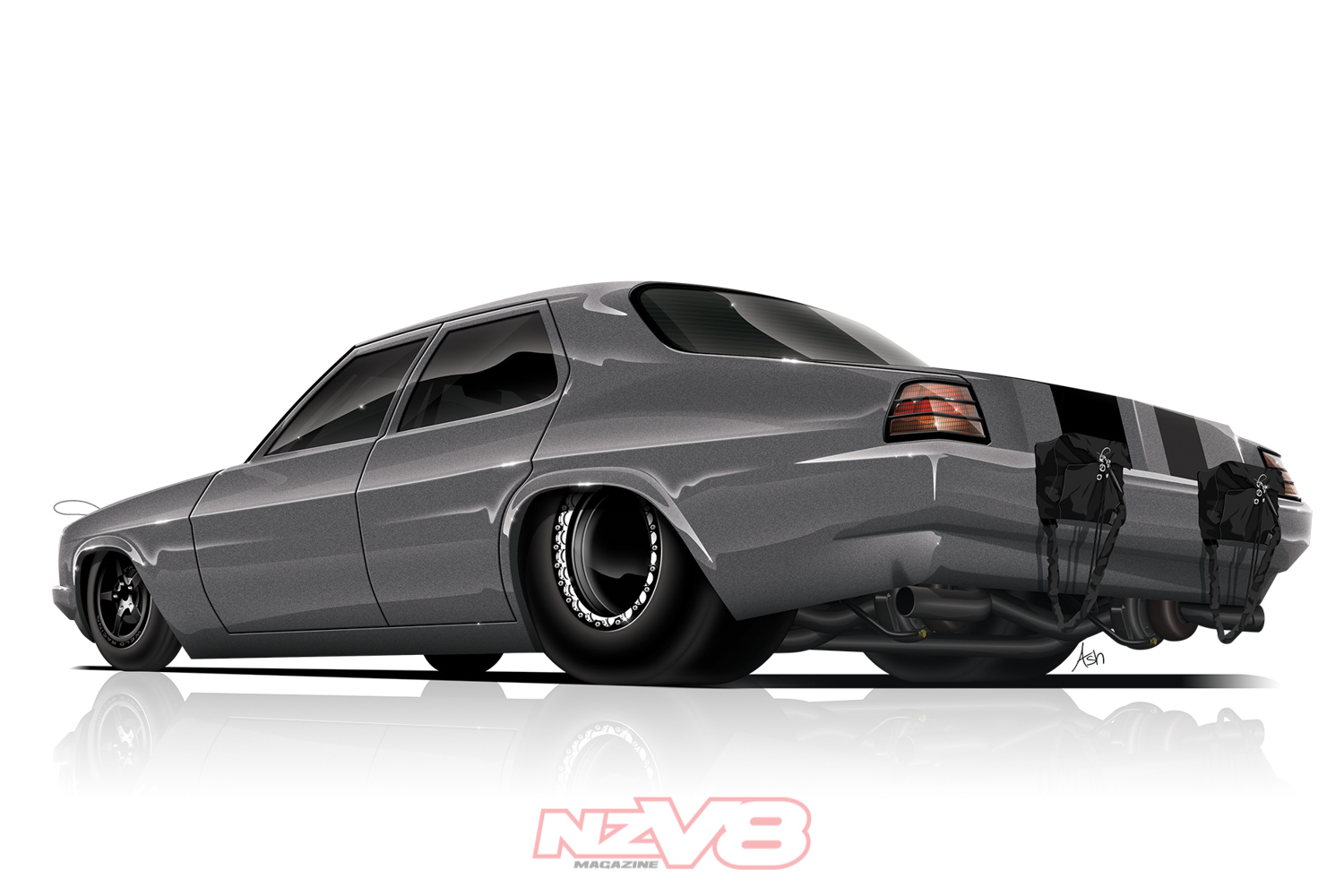the blown and injected XW cruiser on this issue’s cover is one sweet machine, so it may come as a surprise to learn that, if James Taylor could, his next build would be … a Ford Anglia

James Taylor’s first car was a Ford Anglia. He restored it in his dad’s panel shop, and it was that car that got him into cars as a hobby. It will come as no surprise, then, to find out that James has fond memories of the humble Anglia 105E as something more than just a quirky-looking economy car of the 1960s. However, it’s what James would do to an Anglia that would really set it apart from all the other Anglias out there.
The best thing you can do to those cars is give them a bit of power, and James’d be jumping feet first into the deep end, with a Nascar donor car sourced for the running gear, mechanical support, and ancillary components.
This means that a 358ci Roush-Yates D3 small block screamer, good for somewhere in the region of 800hp — perfect for a car that weighs less than 800kg! — and seriously narrowed nine-inch diff filled with all the gear would find its way inside. The four-speed dogbox would get the toss for a six-speed sequential.

A drop-base air cleaner would be needed to try to keep the engine height manageable, but the high-rise intake set-up would still see the big filter sky high through the bonnet, while Nascar-style side-exit exhausts would take care of the other side of the equation.
The next issue, of course, would be ensuring that the poor old chassis could cope with that sort of firepower. The easiest solution would come in the form of a whole lotta chromoly tubing and a TIG welder. A full tubular space frame with integrated roll cage would be built to utilize as much of the Nascar componentry as possible, including the coilover suspension and massive brakes, with a set of 15×8-inch front and 15×10-inch rear Nascar-style wheels and a bit of tyre sidewall.
![NZV8 155 [CMYK]2.jpg](https://nzv8.co.nz/wp-content/uploads/2023/03/NZV81555BCMYK5D2.jpg)
These wheels would, of course, be far larger than anything the old Ford engineers could have conceived for the Anglia. The plasma cutter would be needed to carve out a decent guard radius, and a set of bolt-on A9X Torana–style flares would try to provide a bit of decency.
However, other than the flares, that’d be it.
“No added on spoilers, or chins, or anything; I’d keep the stock grille and bumpers, and no side chrome,” James says.
The paint would be kept as original as possible, in its light blue with a white roof, and whatever patina it had when the project began would remain.

We’re not looking at anything too showy — as James puts it, “It’d just be something built for high revs and shitloads of tyre smoke.”
We wholeheartedly approve.
Justin from the LVVTA says:
“This little Anglebox would pack some serious punch! Getting hold of a complete Nascar would be a good way to get all of the key components, and eliminate the need to source parts that’d be ‘man enough to do the job’ with 800 horses pushing it all along. Although that race-car heritage would ensure that the parts would be strong, there might be some things that would need either modification or rectification to bring them up to road-going standards, which are designed to consider not only strength, but also fatigue resistance and the long-term durability of components and assemblies. For example, the brake calipers may not have protective dust boots fitted over the pistons, and that would increase the likelihood of water, road dirt, and debris entering the cylinder and causing premature component failure.
“We also often see brake pedals and related mounting components that are fabricated with extremely lightweight sheet steel or similar materials and then welded together. This is more readily accepted on dedicated motorsport vehicles, due to the constant maintenance and inspections that these types of vehicles generally get during off-season servicing, scrutineering checks, and regular routine maintenance and inspections. There is an expectation that, in a road-legal car, the vehicle will be durable in-between inspections, which, depending on the vehicle’s date of first registration, can be 6 months, 12 months, or even up to three years, as is currently the case with a brand-new scratch-build.
“The full space-frame chassis would be a necessary addition to control all of that torque and the cornering forces, but keep in mind that this would need to go through a review process with our Technical Advisory Committee to confirm that the design was suitable. Likewise, the front suspension would also be likely to require an approval to make sure that it incorporated the required on-road geometry, and that it would be durable enough for road use.
Being a space frame would also push the car into being a scratch-built vehicle. That means all of the applicable scratch-built vehicle requirements would need to be met. If the vehicle builder got on board with an LVV certifier early on in the project, any issues could quickly be identified and resolved.
“Getting the intake to fit below the sight-line requirements would be tricky if high-rise manifolds were used, which means the project should be carefully planned so that the desired result will comply.
“I think most Kiwis — at least, those born pre-PlayStation — have had some fun in an Anglia at some point; I know I have. I doubt any of us will lose our soft spot for these quirky but fun little cars. This concept one also gets our tick of approval!”
Your thoughts on last month’s Pro Prem concept:

David O’Reilly: Looks like a big job, but I’m sure Tony W. will be able to sort it
Johnny Burkhart: ‘Carried Away Motors’ Masterton haha!
Sean Clark: I feel inspired. It almost has the same body lines as my [Oldsmobile] Delta 88




